When you’re getting started with international trade, there are certain factors that you must consider. First, you need to decide what to sell and where to source it — and for many importers, that means sourcing from China. It has a well-developed manufacturing industry, product variety, relatively low production costs, and advanced logistics.
However, identifying a manufacturer in China and placing an order is only part of the equation. You also need to figure out how you’ll ship your goods to the US. New importers may find shipping from China to be a complicated process. You have to understand all the shipping methods available to avoid costly delays and losses.
This article discusses some of the most important things you need to understand about shipping from China to the US.
Table of Contents
Air Freight vs. Sea Freight: 3 Important Considerations
One of your most significant considerations as an importer is the shipping method you’ll use to transport your goods to the USA. There are two main ways to ship them — by air or by sea. There are three essential factors to think about when deciding which option to choose. These are:
#1 Product Type
The product you’re importing will largely determine whether you can ship your goods by air or by sea from China. For instance, if your cargo is too heavy and bulky, it may not be possible to ship by air due to weight and space limitations. Sea freight is ideal for large and bulky items.
Certain forbidden or restricted products cannot be transported by air. Examples include flammables such as aerosol cans, corrosives like batteries, and toxic substances such as chemicals. There are, however, no such limitations on sea freight.
On the other hand, if you are importing highly valuable products and safety is your biggest concern, you may want to consider air freight.
#2 Timing
How soon you need your products to arrive in the USA from China is another factor that will influence your choice of shipping method. Airfreight is the obvious choice for transporting urgent cargo.
To put this in perspective, it can take as little as 3-5 days to air freight cargo from China to the USA. On the other hand, it can take anywhere from 21-30 days to ship cargo from Shanghai to the port of Los Angeles.
Another consideration is where your goods will arrive and how long it will take to transport them to your shop or warehouse. For example, when you ship your products by sea, they will arrive at a designated port in the USA. The distance between the port and your premises may add to your waiting time.
#3 Cost
Cost is perhaps the most significant consideration of all. Without a doubt, air freight is several times more expensive than sea freight. In some cases, if you’re shipping a small consignment, it may be cheaper to use air freight over ocean freight. It will be cheaper to transport large consignments via ocean freight.
In some cases, the circumstances around the goods will influence the method you use, even when factoring in the cost. For instance, if you are desperate to ensure that your product is available to customers by Thanksgiving or Christmas, you might use air freight to save on time.
Shipping Your Samples vs. Shipping a Purchase Order
If you are shipping small packages such as product samples, it might make sense to use regular postal mail or an international courier. Regular post, while economical, may be too slow, however.
Using an international courier (express freight) such as DHL, FedEx, or UPS is much faster, taking anywhere between 3-7 days. If you’re shipping larger product samples of between 100-500kg, it is advisable to use air freight which can take up to 10 days.
Shipping FCL vs. LCL
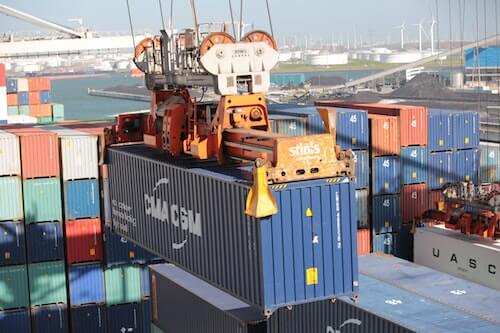
A container being loaded onto a ship for transport
If you decide to ship by sea from China to the US, you will encounter two standard terms — FCL and LCL.
FCL, or ‘full container load,’ refers to transporting your cargo in a dedicated container. In other words, FCL means that you own all the goods in that particular container. This method of shipment is ideal when you are transporting high-volume goods.
LCL, on the other hand, refers to ‘less than container load.’ Your cargo is put in a consolidated container with other shipments owned by different importers. This option is ideal when you are transporting low-volume cargo that cannot fill up a container.
The type of cargo you are shipping and its size will determine which shipping method to use between FCL and LCL. If you’re importing a high volume of goods that will easily fill up a container, it is best to use FCL. This method is also ideal when you want to minimize the risk of damage to your goods due to handling and to mitigate time delays.
On the other hand, LCL comes in handy when your consignment cannot fill up a container load. It is relatively more cost-effective for smaller shipments as you pay only for the space that your cargo occupies.
On the flip side, LCL shipping means that your products will take longer to get to you. The different shipments will have to be consolidated at departure and de-consolidated on arrival, which takes time and extensive paperwork.
Ensuring Product Quality Before Shipping
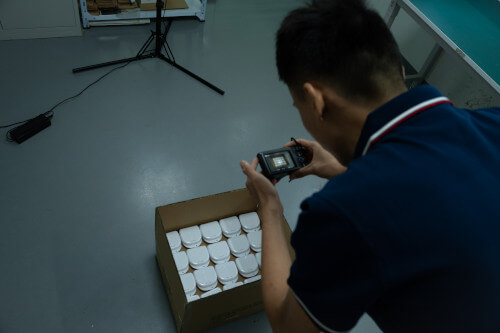
An Insight product inspector photographing tooth whitening kits during a quality inspection
When you place an order with a Chinese manufacturer and are arranging the logistics, chances are that you are doing so from the other side of the globe. But how can you ensure that the goods you receive will be of high quality and meet all requirements? This is where product quality inspection comes in.
Many successful importers conduct product quality inspections by contracting a third-party quality services company (like Insight). The company inspects the quality of their goods either before, during, or after production. This inspection takes place while the products are still at the factory in China.
The most significant benefit of using third-party product inspectors is to ensure that you get quality products that meet your specifications and do not violate health and safety regulations. In effect, inspection eliminates any surprises that may be awaiting you after a 30-day sea voyage.
Having your products inspected while still in China can help you avoid losses, delays, and damage to your company image.
Download Your Free Price vs. Quality Guide
Importing goods from China makes sense for most importers due to the low costs of production. However, this wouldn’t matter much if, after 30 days, you received low-quality goods that you couldn’t sell to your customers.
It is essential to take all the necessary steps to balance price and quality. Our free Price vs. Quality Guide gives deeper insight into how to navigate these waters as you import goods from China to the USA.

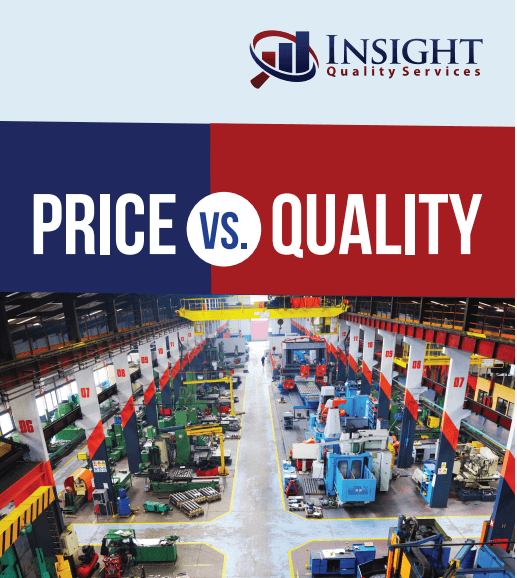
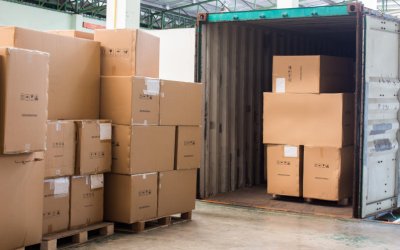
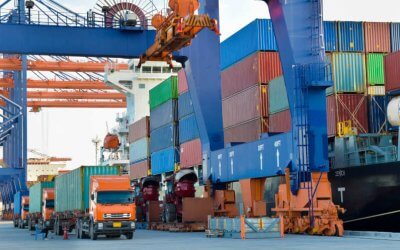
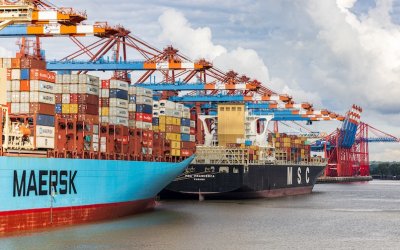
0 Comments